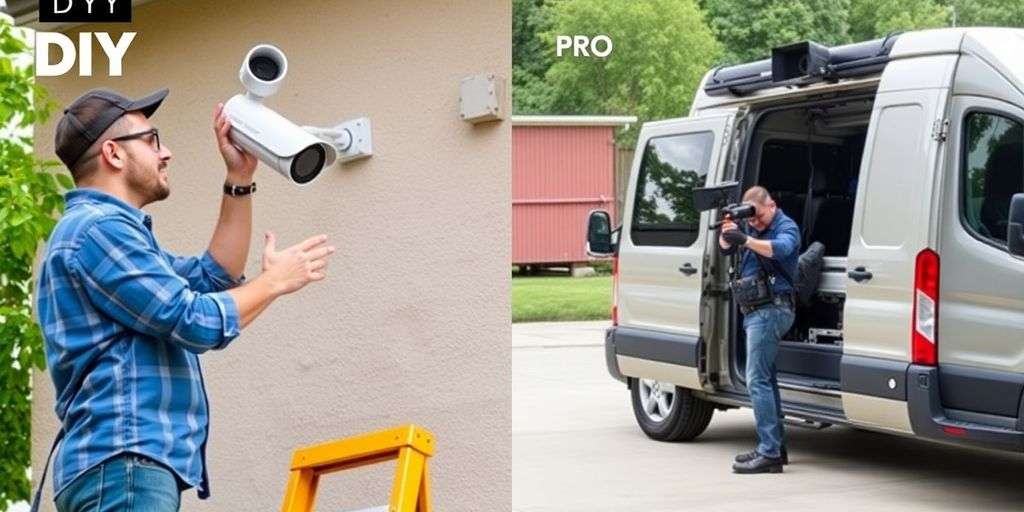Enhancing the voltage of your electric fence not only boosts its performance but also increases its effectiveness as a deterrent. This article will explore various strategies to strengthen the shock delivered by your electric fence, ensuring it functions optimally for security and containment.
Key Takeaways
- Optimise grounding techniques by placing ground rods effectively and enhancing soil conductivity.
- Improve fence configuration through parallel wiring and selecting appropriate wire gauges.
- Regularly maintain and test your fence to ensure consistent voltage and adjust for seasonal variations.
Optimising Grounding Techniques
Ground Rod Placement
To ensure optimal performance of your electric fence, the placement of ground rods is crucial. Ensure that ground rods are spaced at least 2 metres apart and are connected using high-quality clamps to prevent electrolysis, which can corrode the connections. It’s advisable to use copper, stainless steel, or galvanised steel rods for better conductivity and durability.
Enhancing Soil Conductivity
Improving the conductivity of the soil around your ground rods can significantly enhance the effectiveness of your electric fence. Consider drilling a larger hole than usual and filling it with bentonite, a gel-like substance that absorbs moisture and improves conductivity. This method is particularly useful in dry soil conditions.
Using Moisture Absorbers
In areas where soil dryness is a concern, using moisture absorbers can be a game-changer. Bentonite, when used as a moisture absorber, not only retains moisture but also enhances the overall conductivity of the grounding system. This adjustment can lead to a stronger and more consistent shock from your electric fence, ensuring that it performs optimally regardless of seasonal variations.
Improving Fence Configuration
Parallel Wiring
To enhance the effectiveness of your electric fence, consider adopting a parallel wiring configuration. This approach connects all live wires at the beginning and end of each section, significantly reducing the total resistance across the wires. This setup ensures that the shock delivered remains consistent along the entire length of the fence, providing a reliable deterrent.
Choosing the Right Wire Gauge
Selecting the appropriate wire gauge is crucial for maintaining a strong and efficient electric fence. A thicker wire gauge can handle more electrical current, which is essential for longer fence lines. Ensure you choose a wire gauge that matches the power output of your energiser and the total length of your fence to avoid any performance issues.
Increasing the Number of Live Wires
Adding more live wires to your fence can substantially increase its deterrence capability. Each additional live wire not only intensifies the shock but also provides redundancy, ensuring that even if one wire fails, the fence remains operational. Consider spacing the wires evenly to maximise coverage and shock distribution.
Selecting the Best Energiser
When choosing the right energiser for your electric fence, it’s crucial to understand the specifications and match them to your fence’s requirements. Ensure the energiser’s output in joules is sufficient for the length of your fence; typically, at least one joule per mile is recommended. Consider the type of energiser based on your needs: mains-powered units offer the most cost-effective joule output, while battery-powered models provide portability but require frequent recharging. Solar energisers, though more expensive, are ideal for remote locations without access to power.
Understanding Energiser Specifications
To select the most effective energiser, you must first understand its specifications. Look for the joule output, which indicates the shock strength. Higher joule ratings generally mean stronger and more extensive fence coverage. Also, check the impedance and the type of current it uses (AC or DC), as these factors affect performance and suitability for different environments.
Matching Energiser to Fence Length
It’s essential to match the energiser to the length of your fence. Using an undersized energiser will lead to inadequate power distribution, especially if there’s vegetation or a fault in the fence. Conversely, an oversized energiser can handle larger areas and more challenging conditions, providing a buffer against potential issues.
Evaluating Energiser Performance
Regularly evaluate your energiser’s performance to ensure it consistently delivers the necessary power. This includes checking for voltage drops and the impact of environmental factors like vegetation growth. Adjustments may be necessary to maintain optimal performance throughout different seasons and under varying conditions.
Tip: Always opt for an energiser that offers slightly more power than you think you’ll need. This extra capacity can help compensate for unexpected challenges and ensure your fence remains effective.
Regular Maintenance and Testing
Routine Checks
To ensure your electric fence continues to operate at its best, conduct routine checks at least once a month. Inspect all components for wear and tear, and make sure that the fence line is free from vegetation that could reduce its efficiency.
Testing for Voltage Consistency
Regular testing for voltage consistency is crucial. Use a digital voltmeter to measure the voltage levels at different points along the fence. This will help you identify any potential issues that could compromise the fence’s effectiveness.
Adjusting for Seasonal Variations
Be mindful of seasonal variations that can affect your fence’s performance. Adjustments may be necessary to accommodate changes in weather and ground moisture levels. For instance, during wet seasons, you might need to increase the tension in the wires to maintain optimal functionality.
Conclusion
In conclusion, enhancing the shock strength of your electric fence involves a combination of strategic installation and meticulous maintenance. By understanding the principles of electric fencing, selecting the right materials, and ensuring proper grounding, you can significantly improve the effectiveness of your fence. Remember, the key to a stronger shock lies not only in the power of the energizer but also in the integrity of the entire system. Regular checks and adjustments are crucial to maintaining optimal performance and safety. Embrace these tips to ensure your electric fence serves its purpose effectively, keeping your property secure and your livestock contained.
Frequently Asked Questions
How can I improve the effectiveness of my electric fence in dry or sandy soil?
In dry or sandy conditions, it’s advisable to use more ground rods as these soils have less moisture, making it harder for energy to transfer. Increasing the number of ground rods enhances the energy collection capacity, thereby improving the fence’s effectiveness.
What is the benefit of using parallel wiring in an electric fence?
Parallel wiring connects more than one live wire together at both the start and end of each section. This configuration reduces the amount of resistance on the electric fence, allowing for a higher current flow and a stronger shock.
Why is regular testing important for maintaining a strong electric fence?
Regular testing ensures that the fence maintains consistent voltage levels. It helps identify any issues that might reduce the shock strength, such as poor grounding or wire damage, allowing for timely adjustments and repairs.





